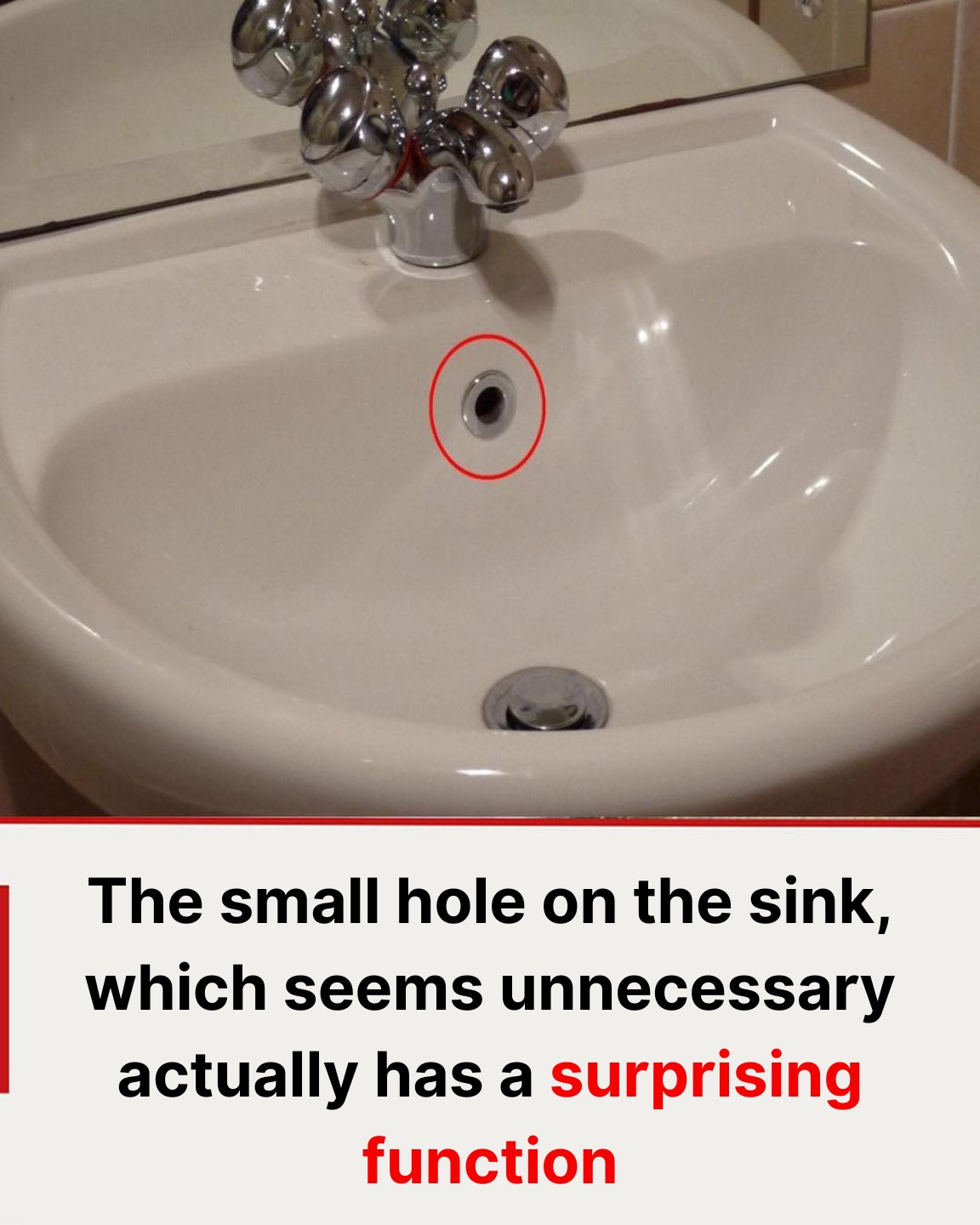Have you ever noticed the small hole near the top of your bathroom sink and wondered why it’s there? At first glance, it might seem like an insignificant design feature, but this little opening actually serves an essential purpose. It’s called an overflow hole, and it’s one of the most practical elements of sink design. Despite its simplicity, many people don’t fully understand how it works, why it’s important, or how to maintain it properly. Today, we’ll break down everything you need to know about the overflow hole, from its function and benefits to potential drawbacks and effective cleaning tips.

The Purpose of the Overflow Hole in a Bathroom Sink
The overflow hole is strategically placed near the top of the sink basin, usually about one-third of the way down. It’s not there for decoration—it has a very important job. This small opening is connected to the drainage pipe beneath your sink, and its primary role is to prevent water from overflowing if the sink begins to fill up.
Here’s how it works: Imagine you accidentally leave the faucet running while stepping away to answer a phone call or deal with an unexpected distraction. As the water continues to flow, the sink will start to fill up. But before the water level rises to the edge of the basin and spills onto your bathroom floor, the overflow hole steps in. Once the water reaches this opening, it drains directly into the sink’s main pipe, preventing a watery disaster. It’s a brilliantly simple design that can save you from costly water damage and messy cleanup.
However, the overflow hole isn’t just for emergencies. It also helps improve drainage by allowing air to escape while water flows down the sink, preventing air bubbles and helping the water drain more efficiently.
The Hidden Drawback of the Overflow Hole
As helpful as the overflow hole is, it comes with its own set of problems. Its location and design make it a magnet for dirt, bacteria, and mold buildup. Over time, soap scum, hair, and other debris can accumulate inside the overflow hole, creating a breeding ground for bacteria. This often results in unpleasant, musty odors wafting from the sink.
If you’ve ever caught an unexplained bad smell in your bathroom and couldn’t pinpoint its origin, there’s a good chance the overflow hole is the culprit. The worst part? It’s often overlooked during regular sink cleaning, meaning grime can build up for weeks—or even months—before anyone realizes there’s an issue.
How to Properly Clean the Overflow Hole
Thankfully, cleaning the overflow hole isn’t difficult, and you don’t need any fancy equipment or harsh chemicals. With just a few common household items, you can eliminate odors and ensure your sink stays fresh and hygienic.
Step 1: Prepare a Cleaning Mixture
In a small bowl or container, mix equal parts white vinegar and baking soda. This powerful combination creates a fizzing reaction that can break down grime, bacteria, and stubborn buildup.
Step 2: Apply the Mixture
Carefully pour the vinegar and baking soda mixture directly into the overflow hole. You’ll notice a satisfying bubbling and fizzing as the solution starts to work its magic.
Step 3: Let It Sit
Allow the mixture to sit for about 5 to 10 minutes. This gives it enough time to break down any residue and eliminate odors.
Step 4: Flush with Warm Water
After waiting, flush the overflow hole with warm water. Use enough water to rinse away any remaining residue and ensure the pipes are completely clear.
Step 5: Repeat if Necessary
If the smell persists or the hole still looks dirty, repeat the process until everything is fresh and clean.
Tips for Ongoing Maintenance
Regular maintenance can prevent odor and buildup in the overflow hole, keeping your bathroom sink clean and functional. Here are a few simple tips:
- Clean Regularly: Make it a habit to clean the overflow hole every few weeks using the vinegar and baking soda method.
- Inspect for Clogs: Periodically check the sink’s main drain for any signs of clogs or slow drainage, as these can contribute to lingering odors.
- Use Natural Cleaners: Vinegar and baking soda aren’t just effective—they’re also eco-friendly and safe for your pipes. Avoid using harsh chemical cleaners that might corrode the metal or plastic parts of your plumbing.
- Wipe the Sink Basin Daily: A quick wipe-down with a damp cloth can prevent soap scum and grime from reaching the overflow hole in the first place.
Why This Little Hole Deserves More Credit
It’s easy to overlook the overflow hole—it’s small, inconspicuous, and often hidden from view. But this humble feature plays a significant role in preventing water damage and keeping your sink running smoothly. Without it, a moment of forgetfulness could turn into an expensive repair job.
At the same time, neglecting the overflow hole can lead to bad smells and bacterial growth, turning an otherwise clean bathroom into an unpleasant space. With just a little attention and occasional cleaning, you can ensure that this often-ignored feature continues to do its job effectively.
The Takeaway: A Small Feature with Big Importance
The overflow hole in your bathroom sink might seem like an insignificant detail, but it’s a crucial safety feature and a testament to smart, functional design. It prevents flooding, aids in drainage, and keeps your bathroom dry and damage-free. However, like any other part of your home, it needs occasional care and cleaning to stay effective.
So, the next time you notice that little hole in your sink, remember: it’s not just a random design choice. It’s a thoughtful addition that makes your bathroom smarter, safer, and more efficient. And now that you know how to clean and maintain it, you can keep your sink fresh, odor-free, and working exactly as it should.





